XMM-Newton News Archive 2010 - XMM-Newton
XMM-Newton News Archive - Year 2010
Back to News Archive.
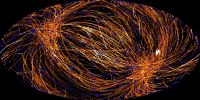 24-Dec-2010:
24-Dec-2010:
XMM-Newton All Sky Slew Image
XMM-Newton All Sky Slew Image All Sky Image ESA's cornerstone mission XMM-Newton is the most sensitive X-ray observatory ever flown. This is impressively evident during EPIC-pn slew exposures which yield on average only seven seconds of on-source exposure time.
Further details here on our XMM-Newton SOC Website.
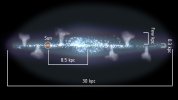 19-Nov-2010:
19-Nov-2010:
New evidence for supernova-driven galactic fountains in the Milky Way
Observing the X-ray-bright gas in the halo of the Milky Way, ESA's XMM-Newton has gathered new data which favour a process involving fountains of hot gas in our Galaxy.
Further details on the ESA Science & Technology pages.
 19-Nov-2010:
19-Nov-2010:
The X-ray Universe 2011 Symposium - first announcement
Further details here on our XMM-Newton SOC Website.
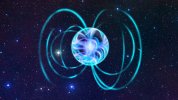 15-Oct-2010:
15-Oct-2010:
Are most pulsars really magnetars in disguise?
Astronomers using XMM-Newton and other world-class X-ray telescopes have probed a curious source, which emits flares and bursts just like a magnetar but lacks the extremely high external magnetic field typical of these objects.
Further details on the ESA Science & Technology pages.
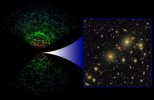 15-Sep-2010:
15-Sep-2010:
Joining forces between ESA missions: XMM-Newton follows up Planck cluster detections. A new supercluster is revealed.
Planck has obtained its very first images of galaxy clusters. XMM-Newton followed up Planck's detections and revealed that one of them is a previously unknown supercluster of galaxies.
Further details on the ESA Science & Technology pages.
 24-Aug-2010:
24-Aug-2010:
XMM-Newton 10th Announcement of Opportunity (AO-10)
The XMM-Newton Tenth Announcement of Opportunity is now open and observing proposals may be submitted.
The deadline is 8 October 2010, 12:00 UT
Further details here on our XMM-Newton SOC Website
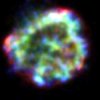 22-Jul-2010:
22-Jul-2010:
X-ray telescopes reveal the structure of a 450 year old cosmic bomb
Supernovae are among the most powerful explosions in the Universe. These explosion are in fact so powerful that for several centuries their blasts travel through space with thousands of km/s. Astronomers from Utrecht University, operating like cosmic crime scene investigators, have now been able to unveil the make up of one of those cosmic bombs, an object that goes by the name of 0519-690, which is located at a mere 150,000 light years from us. Like their CSI counterparts, they used X-rays, but in this case the explosion itself is the source of X-rays, which were recorded by ESA's XMM-Newton telescope and NASA's Chandra telescope.
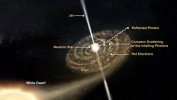 21-Jun-2010:
21-Jun-2010:
XMM-Newton line detection provides new tool to probe extreme gravity
A long-sought-after emission line of oxygen, carrying the imprint of strong gravitational fields, has been discovered in the XMM-Newton spectrum of an exotic binary system composed of two stellar remnants, a neutron star and a white dwarf.
Further details on the ESA Science & Technology pages.
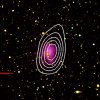 31-May-2010:
31-May-2010:
Novel observing mode on XMM-Newton opens new perspectives on galaxy clusters
Surveying the sky, XMM-Newton has discovered two massive galaxy clusters, confirming a previous detection obtained through observations of the Sunyaev-Zel'dovich effect, the 'shadow' they cast on the Cosmic Microwave Background. The discovery, made possible thanks to a novel mosaic observing mode recently introduced on ESA's X-ray observatory, opens a new window to study the Universe's largest bound structures in a multi-wavelength approach.
Further details on the ESA Science & Technology pages.
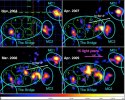 27-May-2010:
27-May-2010:
Molecular clouds reveal a giant outburst of the supermassive black hole at the centre of the Galaxy
The central black hole of the Galaxy, has undergone, several hundred years ago, a violent phase of activity. This is the conclusion reached by an international team led by astrophysicists of the APC laboratory and including scientists of the Service d'Astrophysique of CEA-Irfu, by studying the high energy emission of molecular clouds located in the central regions of the Galaxy.
Further details on the CEA-IRFU web site.
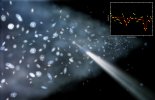 11-May-2010:
11-May-2010:
Warm-Hot Intergalactic Medium in the Sculptor Wall
Scientists have used ESA's XMM-Newton and NASA's Chandra X-ray Observatory to detect a vast reservoir of gas lying along a wall-shaped structure of galaxies about 400 million light years from Earth.
Further details on the ESA Science & Technology pages.
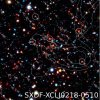 10-May-2010:
10-May-2010:
Invisible light discovers the most distant cluster of galaxies
Dr. Masayuki Tanaka of the Institute for the Physics and Mathematics of the Universe (IPMU), Dr. Alexis Finoguenov of the Max Planck Institute for Extraterrestrial Physics, and Dr. Yoshihiro Ueda of Kyoto University discovered the most distant cluster of galaxies in the universe 9.6 billion light years away using light invisible to our eyes.
Further details on the IPMU Web site.
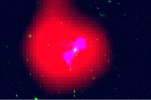 30-Apr-2010:
30-Apr-2010:
Black Holes - "Gas Blowers" of the Universe
Gravity monsters expel gas not only from their host galaxies but even from the space between galaxies in groups.
Further details on the MPE Web site.
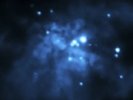 29-Apr-2010:
29-Apr-2010:
'Survivor' Black Holes May Be Mid-Sized
New evidence from NASA's Chandra X-ray Observatory and ESA's XMM-Newton strengthens the case that two mid-sized black holes exist close to the center of a nearby starburst galaxy. These "survivor" black holes avoided falling into the center of the galaxy and could be examples of the seeds required for the growth of supermassive black holes in galaxies.
Further details on the NASA Web site.
 28-Apr-2010:
28-Apr-2010:
XMM-Newton releases new edition of cosmic catalogue
One of the teams behind ESA's XMM-Newton X-ray mission has unveiled the latest edition of their 2XMM catalogue. The newest incarnation boasts an additional 42 000 entries, ratcheting up the total to over a quarter of a million X-ray sources.
Further details on the ESA Science & Technology Pages
 20-Jan-2010:
20-Jan-2010:
XMM-Newton traces dark matter in faint, distant galaxy groups
Observations of faint and distant galaxy groups made with the European Space Agency's XMM-Newton observatory have been used to probe the evolution of dark matter.
Further details on the ESA Science & Technology Pages
